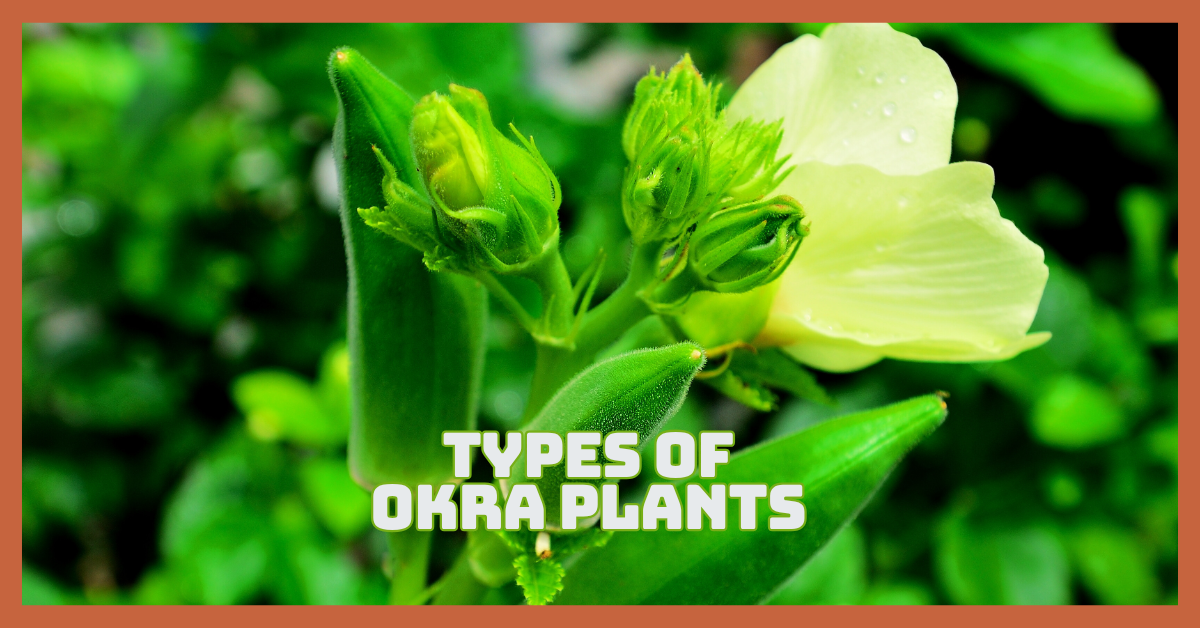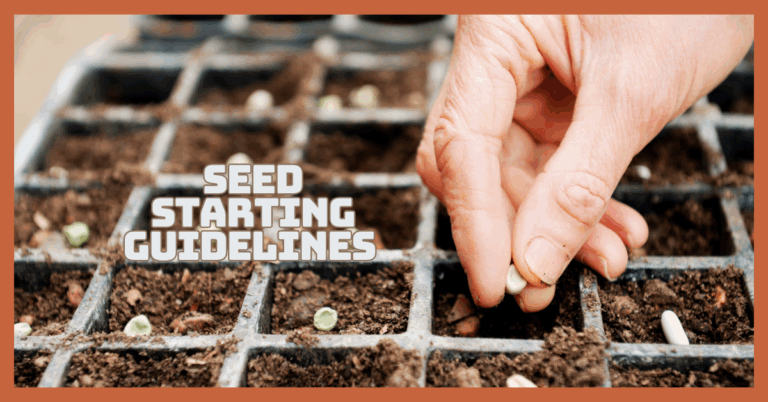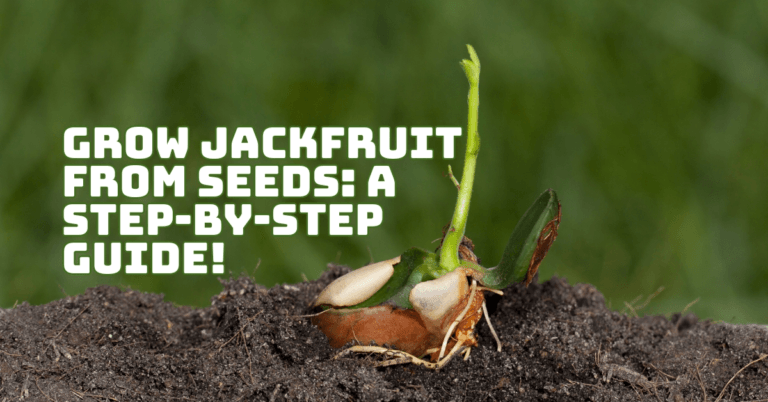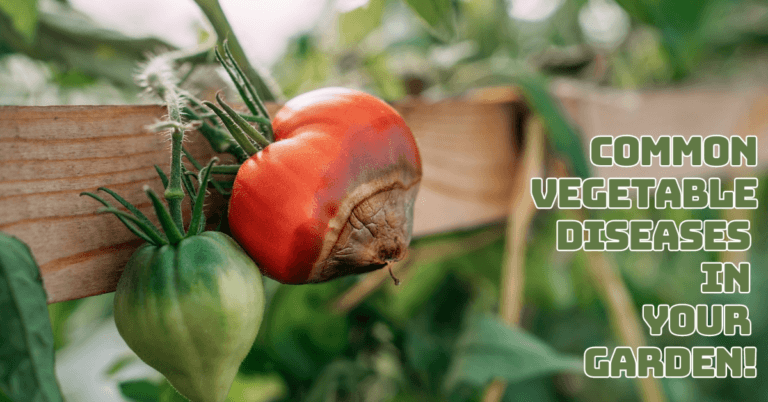Types Of Okra Plants With Expert Growing Tips
The warm-season vegetable okra, sometimes referred to as lady's finger or gumbo, is prized for its succulent pods and abundant nutritional value.
Whether you’re a home gardener or a market grower, choosing the right variety of okra can make a big difference in yield, pod texture, and flavour.
From heirloom favourites to hybrid performers, this guide will explore the most popular and unique types of okra plants to help you cultivate a successful and satisfying harvest.
Types Of Okra Plants With Expert Growing Tips
1. Common Okra (Abelmoschus esculentus)
Features
Common Okra, the most popular okra species, is widely grown across warm climates for its tender, ridged green pods. It gives abundant yields all summer long and usually grows 4 to 6 feet tall.
Its bright yellow flowers attract pollinators, enhancing productivity. The pods are rich in fiber, vitamin C, and folate, making them ideal for health-conscious dishes.
Cultivars like Clemson Spineless and Emerald are valued for their fast growth and smooth texture. This species matures in 50–60 days and can be grown in containers or ground beds, making it versatile for both backyard gardeners and farmers.
How To Grow
Sow okra seeds directly outdoors when soil temperatures stay above 70°F (21°C). Choose a sunny site with well-drained, loamy soil. Before planting, soak seeds in warm water overnight to improve germination.
Plant seeds 1 inch deep, spacing them 12–18 inches apart in rows 3 feet wide. It usually takes 7 to 10 days for seedlings to appear, so keep the soil consistently moist. Thin seedlings to one per spot once 3–4 inches tall.
For moisture retention and weed suppression, apply mulch. Monthly fertilization with compost or a balanced fertilizer is recommended, along with frequent watering, particularly during dry times.
Harvest pods every 2–3 days when they are 3–4 inches long for the best taste and texture. Removing pods early ensures continued production.
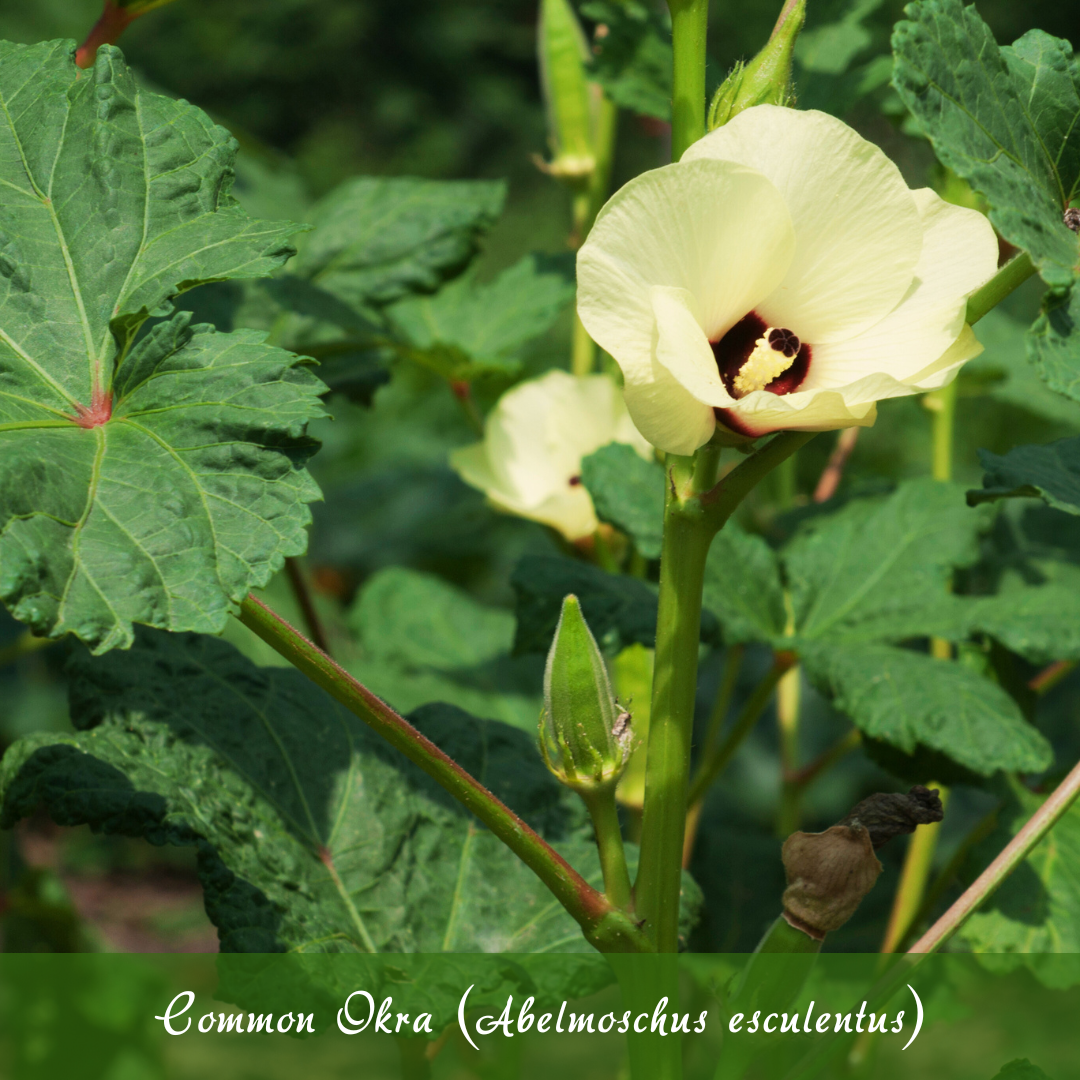
2. West African Okra (Abelmoschus caillei)
Features
West African Okra is native to the humid tropics of Africa and grows taller and bushier than common okra. Plants can exceed 8 feet in height and are especially valued for their large, fibrous pods used in stews and soups.
Unlike A. esculentus, this species tolerates both heavy rainfall and extended heat, making it ideal for tropical agriculture. The pods are thicker and more robust, sometimes growing over 8 inches long.
It also has perennial potential in suitable climates. West African Okra is an essential crop in regions of Nigeria, Cameroon, and Ghana, where it’s a dietary and cultural staple.
How To Grow
Plant seeds when temperatures remain above 75°F (24°C), especially after the rainy season. Select a sunny location with rich, loamy soil and add compost or aged manure before sowing.
Space seeds 1 inch deep, 15–20 inches apart in rows 3–4 feet wide to accommodate the plant’s large size and bushy habit. As the seeds germinate, which takes seven to ten days, keep the soil moist.
This species thrives in high humidity and heavy rainfall, making it perfect for USDA Zones 11–13. Mulch heavily to conserve moisture and prevent weed growth.
Fertilize monthly with compost or a nitrogen-rich feed to support vigorous leaf and pod growth. Harvest pods when they reach 4–5 inches for best tenderness. Pruning can help manage size and improve airflow.
3. Edible Hibiscus (Abelmoschus manihot)
Features
Among the unique types of okra plants, Edible Hibiscus stands out for its nutritious leaves and ornamental yellow blooms. The leaves are tender, mucilaginous, and rich in vitamins A and C, protein, and iron.
This species, which originated in Southeast Asia and the Pacific Islands, can reach a height of seven feet and does well in hot, muggy climates. Its large yellow flowers with dark centers add ornamental value, making it a dual-purpose crop.
Although the pods are edible, they’re not widely consumed. This species is often used in permaculture and tropical food forests for its rapid growth and leaf regeneration.
How To Grow
Grow A. manihot from seeds or stem cuttings in USDA Zones 10–13—plant in fertile, well-drained soil in full sun or partial shade. Soak seeds for 12 hours before sowing to improve germination.
Sow directly or transplant seedlings spaced 18–24 inches apart with rows 3 feet apart. Water regularly, especially during the establishment phase, but avoid overwatering.
Apply nitrogen-rich fertilizer monthly to promote vigorous leaf production. Prune back tall stems to encourage bushy regrowth and continuous harvest.
Harvest young leaves weekly, as frequent picking stimulates new growth. In colder climates, cultivate as an annual or in winter-transportable containers.

4. Musk Mallow (Abelmoschus moschatus)
Features
Musk Mallow is a fragrant species native to South Asia, commonly cultivated for its aromatic seeds used in perfumes and flavouring.
Among the various types of okra plants, Musk Mallow is distinguished for its aromatic seeds and ornamental yellow flowers with maroon centers.
The plant produces stunning yellow flowers with maroon centers and reaches heights of 3 to 5 feet. Its seeds contain ambrettolide, a natural musk substitute.
Musk Mallow thrives in tropical and subtropical regions and is often grown as an ornamental or medicinal plant. Its calming scent and hardy nature make it valuable in cottage gardens and natural landscaping projects.
How To Grow
Sow A. moschatus seeds after the last frost in areas with full sun and well-drained, slightly sandy soil. Germination improves with scarification or soaking seeds overnight.
Space seeds 12–18 inches apart and plant ½ inch deep. The plant prefers warm conditions, thriving in USDA Zones 9–12. Water regularly during the early growth stage, but reduce watering once established to prevent root rot.
Musk Mallow is relatively drought-tolerant and requires minimal fertilization—an occasional balanced organic feed will suffice. Mulch around the base to control weeds and maintain soil moisture.
Deadhead spent flowers to encourage more blooms. Though pods are seldom harvested for food, seeds can be collected when dried for fragrance or traditional uses.
Turn Your Passion for Nature Into Income
🌿 Whether you love gardening, caring for animals, or exploring holistic living,
You can share your knowledge online and earn from it.
Discover how nature lovers are growing their passions into meaningful, income-generating blogs. 👇
5. Wild Okra (Abelmoschus ficulneus)
Features
Among the many types of okra plants, Wild Okra is valued for its resilience, biodiversity contribution, and potential in breeding programs.
Unlike its cultivated relatives, it grows in semi-arid and marginal lands, often as a weed or in abandoned fields. It features fuzzy, lobed leaves and small, pale purple to pink flowers.
While not typically grown for food, its pods and seeds can be used in times of scarcity. Wild Okra has gained attention for its resistance to pests and diseases, making it useful in breeding programs.
The plant is short-lived but fast-growing, and is often used in environmental rehabilitation or research on okra biodiversity.
How To Grow
Grow A. ficulneus in sandy, low-fertility soil under full sun. It thrives in USDA Zones 8–11 and can tolerate dry, harsh conditions with minimal inputs—plant seeds as soon as the last frost has passed or in the early rainy season.
No soaking is required. Space plants 12 inches apart in rows 24 inches wide. This species prefers low-maintenance environments and does not require rich soil or fertilization.
Water lightly until established, then reduce frequency. Avoid overwatering to prevent fungal issues. Because of its tough constitution, it is ideal for restoration projects or educational gardens focused on heirloom and wild species.
Minimal pruning is required. Although edible, pods are fibrous and best used for seed or emergency food supplies.
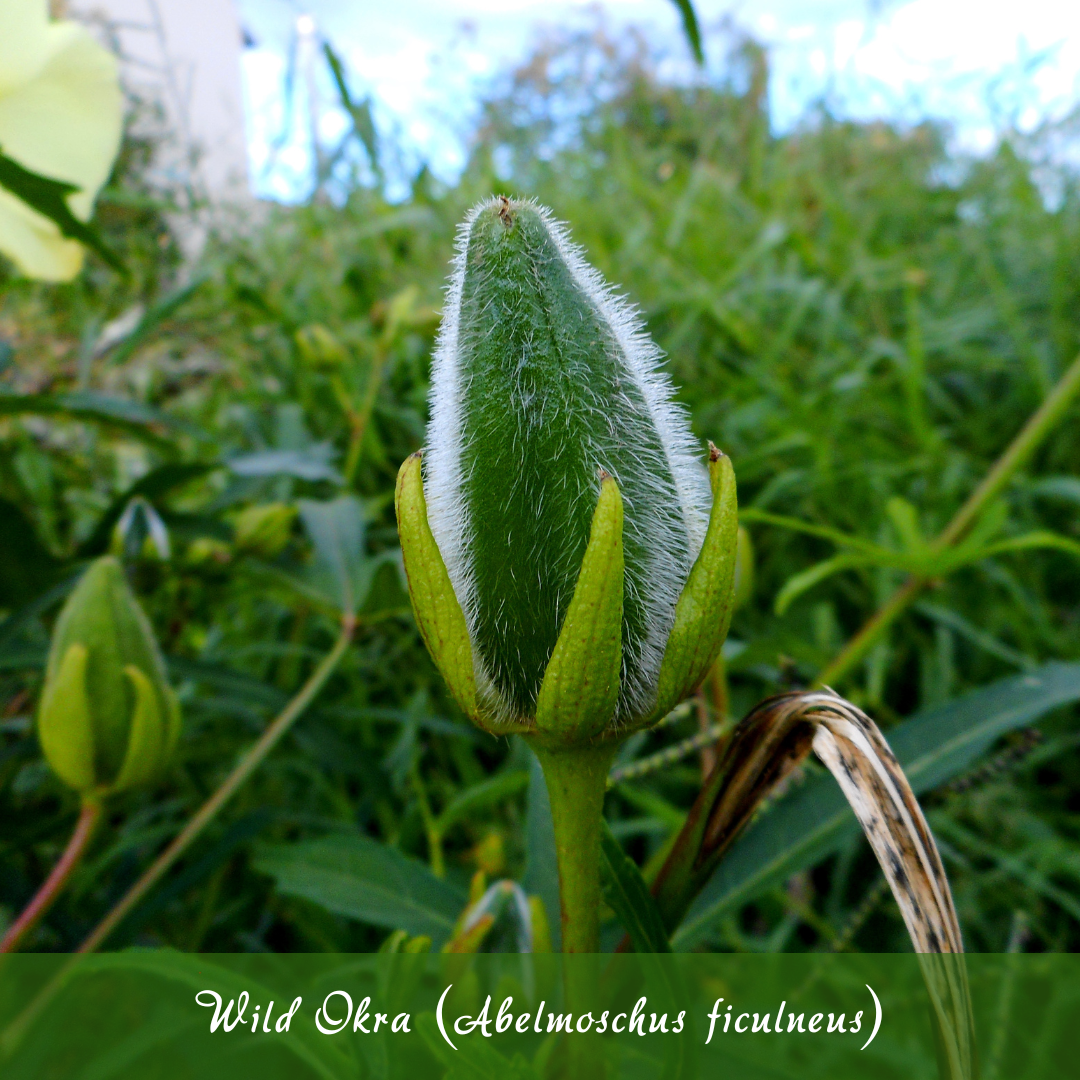
6. Sunset Hibiscus (Abelmoschus manihot)
Features
Sunset Hibiscus, also known as Aibika or Edible Hibiscus, is valued more for its nutrient-rich leaves than pods. It is indigenous to the Pacific Islands and tropical Asia, and it can reach a height of nine feet.
It has large, lobed, deep green leaves and eye-catching yellow flowers with maroon centers. Its leaves are consumed like spinach and are rich in iron, calcium, and vitamins.
While technically related to okra, its pods are rarely harvested for food. This species thrives in warm, humid regions and is ideal for edible landscaping. Its high biomass makes it worthwhile in permaculture and regenerative gardening systems.
How To Grow
Grow A. manihot in USDA Zones 9–12 with fertile, well-draining soil enriched with compost. When it's warmer than 70°F (21°C) in the spring, start seeds indoors or directly sow them.
Plant the seeds 18 inches apart and ½ inch deep. Water consistently during early growth, and mulch heavily to retain soil moisture. This fast-growing plant prefers full sun but can tolerate partial shade.
Harvest young leaves regularly to encourage fresh growth. It requires minimal fertilization but benefits from biweekly organic feedings. Prune lower branches for a bushier shape and airflow.
Protect from frost and strong winds. Sunset Hibiscus is both ornamental and edible, perfect for tropical edible gardens and biodiversity-focused landscapes.
7. Chinese Okra (Luffa acutangula)
Features
Chinese Okra, also known as Angled Luffa, is not a true okra but shares similar culinary applications. Belonging to the Luffa genus, this gourd produces ridged, elongated fruits eaten young like okra—tender, slightly sweet, and excellent in stir-fries or soups.
The plant is a fast-growing vine, reaching up to 20 feet with large, lobed leaves and yellow flowers. When fully mature, fruits become fibrous and are harvested for natural loofah sponges.
It’s popular in Asian cuisine and gardens for its dual-purpose use—both food and bath utility. It thrives in tropical climates and needs trellising for vertical growth.
How To Grow
Sow Luffa acutangula seeds in warm climates after the last frost, ideally in USDA Zones 9–12. Choose a site with full sun and well-drained, fertile soil. Start seeds indoors 3–4 weeks early or sow directly 1 inch deep and 24–36 inches apart.
Trellising is essential for fruit development and air circulation. Water regularly, especially during flowering and fruiting. Use compost or balanced fertilizer every 3 weeks.
Harvest young fruits when 6–8 inches long for cooking; allow them to dry on the vine for loofah use fully. Watch for pests like beetles and mildew. Mulch well and rotate crops annually for best health.
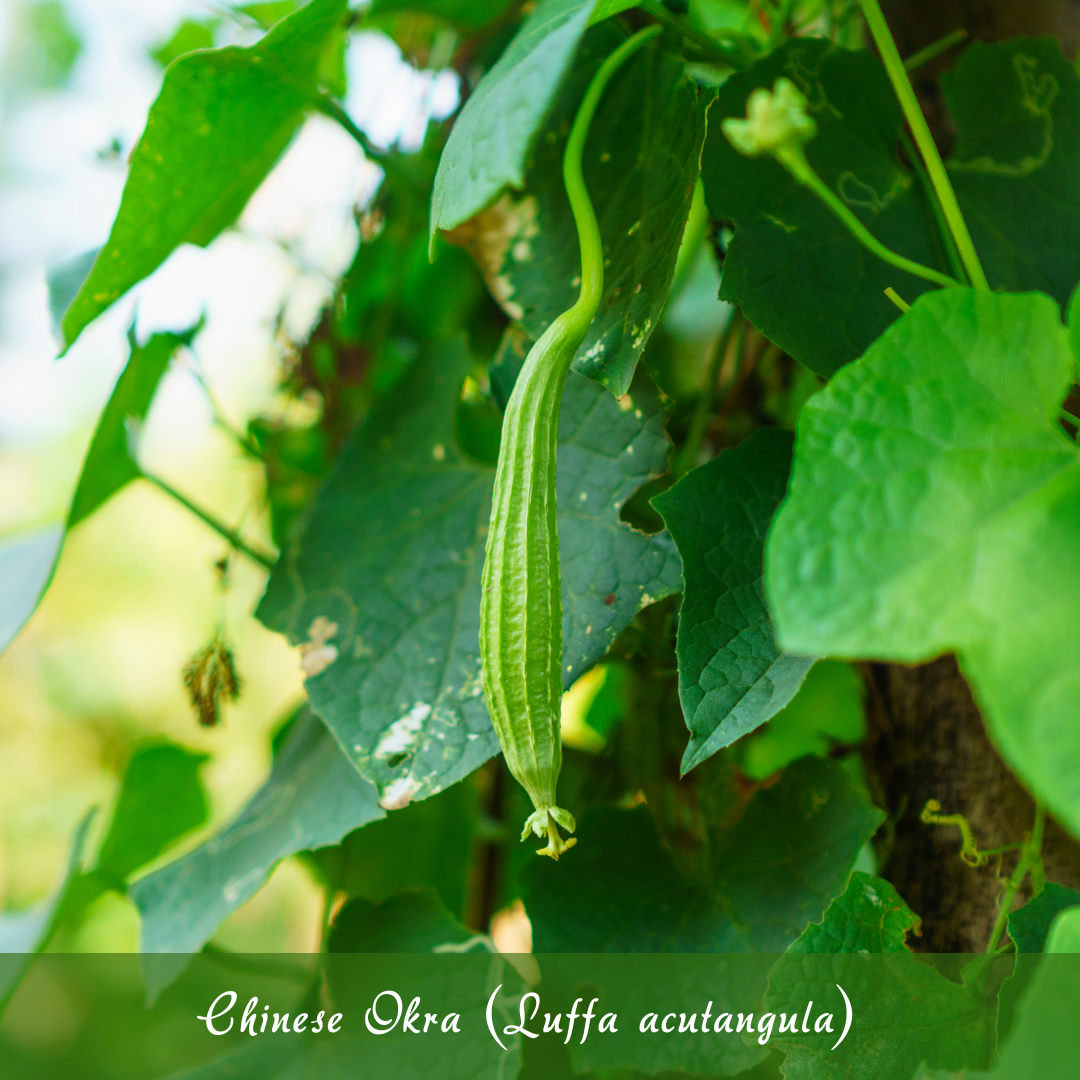
8. Bambara Okra (Abelmoschus caillei)
Features
Bambara Okra is a landrace variety of Abelmoschus caillei found primarily in Nigeria and surrounding regions. It is known for extremely long, ridged pods—sometimes reaching 12 inches—used in traditional soups.
Its bushy growth and heat tolerance make it ideal for subsistence farming. Unlike modern hybrids, Bambara Okra retains a broad genetic base, making it more resilient to pests, diseases, and climate extremes.
It matures more slowly than commercial okra but offers an extended harvest window. Due to its rustic growth habit, it thrives in low-input farming systems and is well-suited to dryland agriculture where resilience is more important than high yield.
How To Grow
Direct sow Bambara Okra seeds 1 inch deep in fertile, well-tilled soil. Choose a sunny location and plant in rows 2–3 feet apart. Space plants 18–24 inches apart to allow branching. Water deeply once or twice a week.
The plant tolerates high temperatures but appreciates moisture-retentive mulch during drought. Side-dress with compost monthly.
Pods grow large, so pick them young for tenderness or allow them to mature for seed saving. Minimal pruning is needed, though staking may help with taller plants.
This variety prefers warm, dry conditions and benefits from being rotated annually to reduce soilborne issues. It’s ideal for traditional, organic, or heritage seed-saving gardens.
9. Green Velvet (Abelmoschus tuberculatus)
Features
Green Velvet, also known as Indian Okra (A. tuberculatus), is a rare wild species native to India and Nepal. Among the lesser-known types of okra plants, Green Velvet offers genetic traits valuable for breeding more resilient and adaptable okra varieties.
Although not cultivated widely, its resilience to poor soils and fluctuating weather makes it of interest to okra breeders. It produces small, greenish pods and delicate yellow blooms.
Its fine hairs and tough skin make it less palatable, but the plant is occasionally used in tribal cuisines and medicine.
Green Velvet's genetic diversity is valuable for improving cultivated okra's resistance to pests, drought, and diseases through crossbreeding.
How To Grow
Grow A. tuberculatus in semi-arid to subtropical zones with sandy or silty soil. Sow seeds in late spring once the soil warms to 75°F (24°C). Plant ½ inch deep and 12 inches apart in rows.
Germination may be slow—pre-soaking seeds for 24 hours helps. Water regularly during early growth, then reduce frequency as plants establish. This species tolerates poor fertility but responds well to organic amendments.
Minimal maintenance is needed once established. Green Velvet is compact, making it suitable for container or border planting.
Protect from frost and waterlogging. Harvest pods early if used for food. Save seeds from mature pods to preserve this unique heirloom species.

10. Red Okra (Abelmoschus esculentus – Red cultivar)
Features
Red Okra is a striking cultivar of Abelmoschus esculentus, not a separate species but distinct for its vibrant burgundy-red pods and stems.
Popular in ornamental edible gardens, the red colour fades when cooked, but the pods remain tender and flavourful. It grows 4–6 feet tall and bears eye-catching yellow flowers with red centers.
This variety is both aesthetically pleasing and productive, producing pods within 55–60 days. It offers the same mucilaginous texture as green okra but stands out in raw dishes or salads.
It attracts pollinators and adds bold contrast to garden beds.
How To Grow
Plant Red Okra in full sun with well-drained, fertile soil once temperatures consistently exceed 70°F (21°C). Suitable for USDA Zones 6–11.
Direct sow seeds ½ inch deep and 12–18 inches apart after the last frost. Soaking seeds for 12–24 hours can improve germination.
Keep the soil moist but not waterlogged. This cultivar thrives with consistent heat and benefits from monthly compost or organic fertilizer. For maximum tenderness, harvest pods between 3 and 4 inches in length.
Regular harvesting encourages more production. Prune lower leaves as the plant matures to increase airflow and reduce disease risk.
11. South American Bush Okra (Pavonia hastata)
Features
South American Bush Okra, scientifically known as Pavonia hastata, is a shrubby perennial native to South America and part of the Malvaceae family.
It produces striking pink flowers with deep maroon centers, resembling small hibiscus blooms. Though primarily ornamental, its young leaves and pods are sometimes consumed locally, offering a mild, mucilaginous texture similar to okra.
The plant reaches about 3 to 5 feet tall and has heart-shaped, hairy leaves. It is drought-tolerant and well-suited for dry or semi-arid environments.
Its attractive appearance and low-maintenance nature make it ideal for native landscaping or food forests in tropical and subtropical areas.
How To Grow
Pavonia hastata thrives in warm climates with well-drained, sandy or loamy soil. Choose a sunny location with partial to full sunlight exposure. After the last frost, sow seeds straight into the ground.
For faster results, propagate from cuttings. To promote natural bushy growth, place them two to three feet apart. Water regularly during early establishment, then reduce frequency as the plant matures—it's quite drought-resistant.
To enrich the soil before planting, add aged manure or compost. Prune lightly to maintain a compact form and stimulate blooming. Fertilize once or twice per season using a balanced organic feed.
Young pods and leaves can be harvested when tender. Pavonia is best grown in USDA Zones 9–11 and is well-suited for xeriscaping and low-input gardens.
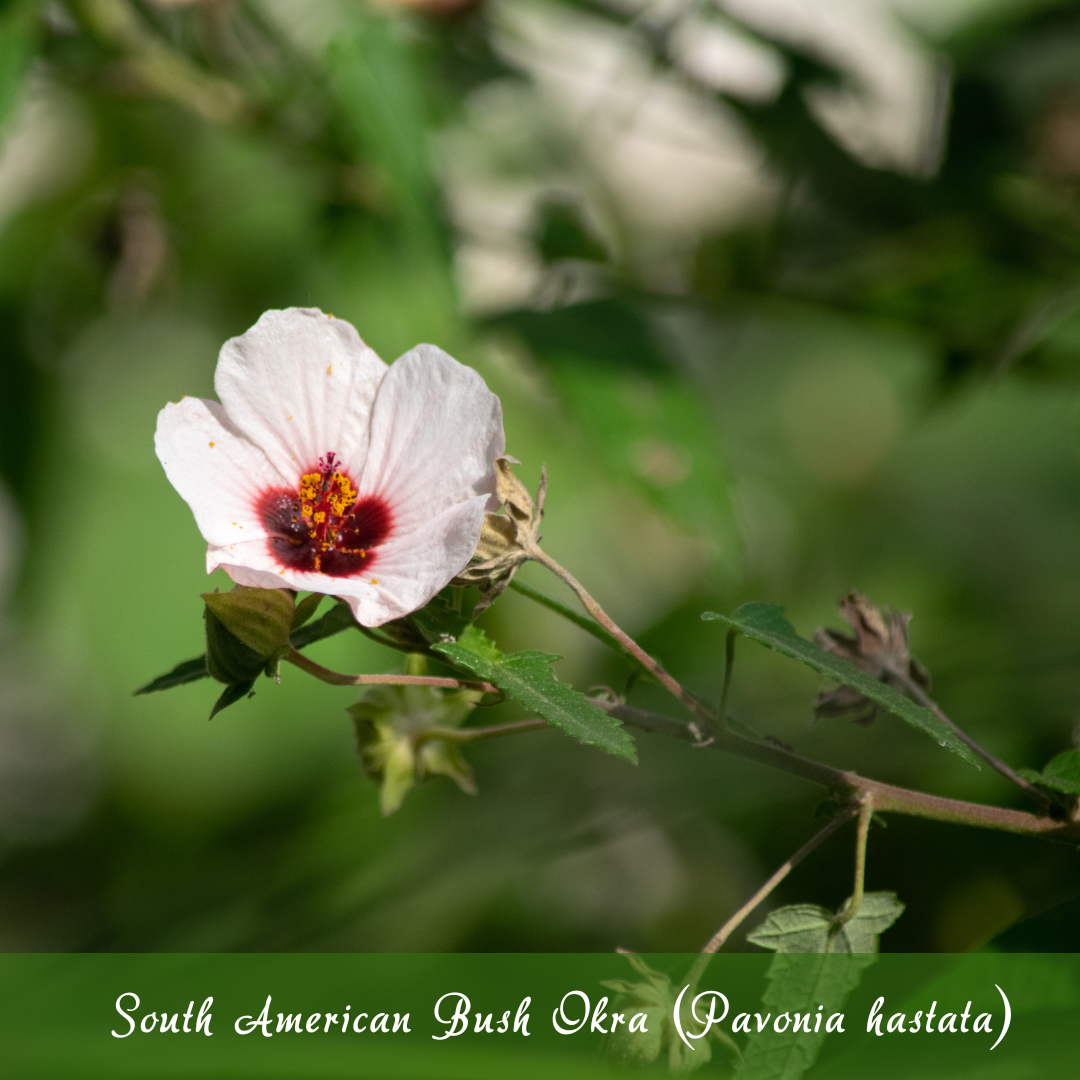
Conclusion
Okra offers a diverse range of varieties, each with unique flavours, colours, and growth habits suited for different gardens and climates.
Exploring different types of okra plants allows gardeners to find the perfect match for their climate, culinary goals, and garden space.
You may choose the ideal plants for your area and guarantee a plentiful harvest by being aware of these varieties. Whether you grow okra for cooking or ornamental value, selecting the right type is key to a successful and rewarding gardening experience.
I trust you enjoyed this article on the Types Of Okra Plants With Expert Growing Tips. Please stay tuned for more inspiring guides, helpful tips, and ideas to help you live closer to nature every day.
Take care!
— JeannetteZ
💬 Your Opinion Is Important To Me
Do you have thoughts, ideas, or questions? I’d love to hear from you. Please leave your comments below or email me directly at Jeannette@Close-To-Nature.org.
📚 More Nature-Inspired Reads
Explore more ways to connect with nature, nurture your pets, and live in harmony with the world around you 🌿

